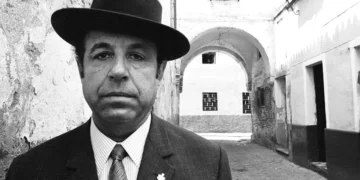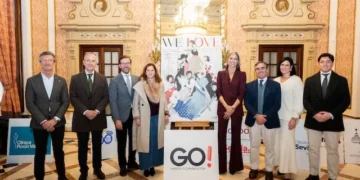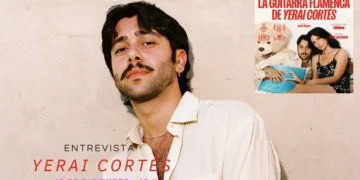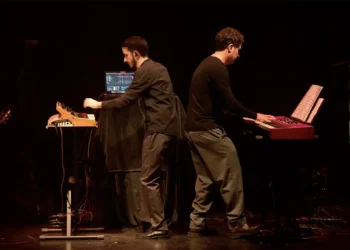Sensual minimalism
|
JUAN VERGILLOS The avant-garde comes to us via a return to the roots. It tends to happen.The concept of an avant-garde flamenco group, a contemporary format that can be exported to “world music” festivals, now more than ever since the traditional flamenco festival (the kind that became fashionable in the sixties and seventies) has been in trouble for some time.Son de la Frontera is a flamenco group that looks to the past to find its identity.To the legacy of Diego del Gastor, which is the equivalent of nineteenth century guitar-playing, the school of Paco de Lucena. Then there’s the auditory surprise of the Cuban tres, which takes us back to the sound memory of metal strings which according to Estébanez Calderón used to accompany romances and rondeñas in “Un Baile en Triana” (“a vihuela and two mandolins…were the core of the orhestral group”).Their debut recording was one of the great flamenco surprises of the 2004 flamenco season. And now we have “Cal”, their new recording which once again breathes life into the past.
Son de la Frontera is made up of Raúl Rodríguez on the Cuban tres, Paco de Amparo on guitar, Moi de Morón singing, Pepe Torres dancing and the rhythm and palmas of Manuel Flores. In “Cal” we hear the guitar variations of Diego del Gastor and also the sounds of Enrique el Mellizo and the taranto of Manuel Torre.Traditional music, freshened up, born again thanks to the arrangements of this admirable group.And also, new compositions, by Raúl Rodríguez and Paco de Amparo, tres player and guitarist of the group.If the first record was centered on the most rhythmic styles, here we find the novelty of cante de Levante, malagueñas and tarantos.Cantiñas of Pinini are also included in honor of the singer from Lebrija.And sevillanas, in this case original music by Antonio Amaya Flores (nicknamed el Mellizo, the “twin”, whose twin sister died shortly after birth, brother of Diego del Gastor, guitarist and singer), reminiscent of seguidillas manchegas and played as a guitar duet. So this is a very laid-back recording, more intimate than the previous one. But the bulk of the work, once again, is made up of soleá and bulerías, the latter of which is heard in five cuts: the modern South American rhythmic bolero, in the thick, powerful, drastic voice of Moi de Morón; the traditional form of these cantes that hark back to Morón and Utrera (Gaspar, Tomás de Perrate, Bernarda, Perrate…); the epic “Bulería de la Cal”, a piece which in its original version was the theme music for Rito y Geografía del Cante; a composition in minor key and the closing number, also bulerías.The record also includes the a capella voice of Moi de Morón and the footwork combinations of Pepe Torres.Among the new compositions is bulerías by Paco de Amparo, “Soleá del Amor” and tanguillos.They are themes that are as festive as they are introspective, and their polyrhythm, countertime and peculiar timbre at times recall African music or South American derivatives of same.The soleá in particular, which I consider one of the most brilliant instrumental pieces of flamenco in recent times, far from traditional formulas but with all the classical feeling of the kind that triggers emotions after some time goes by. Evocative and sensual, facile and profound.Minimalism in the strumming and melodies, and the art of dwelling on every note instead of racing over them. A record that is full of life, direct, but at the same time, polished…unforgettable. Related products :
|
||||||
|
Son de la Frontera. Homenaje Diego del Gastor
|


























